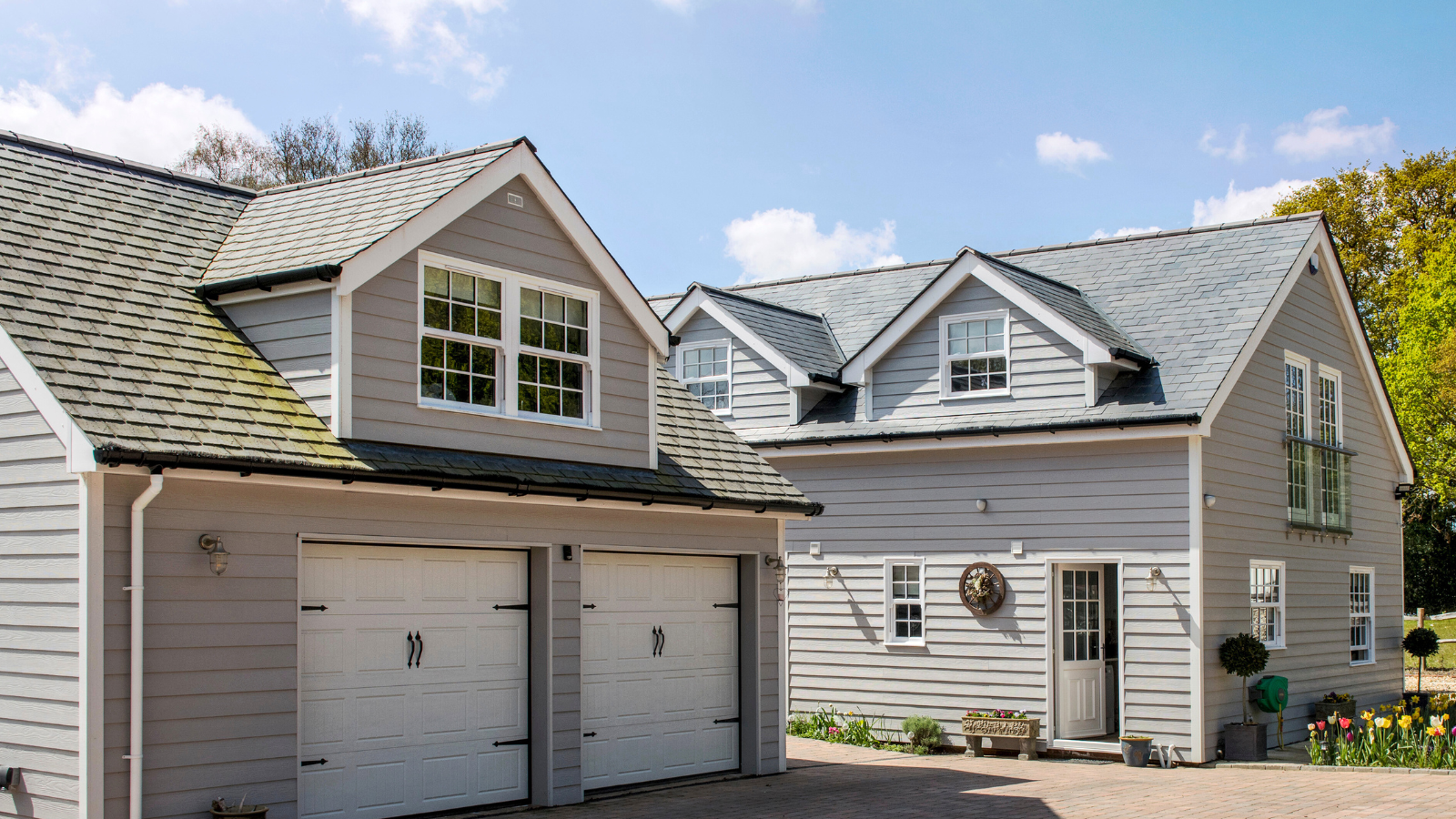How to winterize a garage like a pro in 7 simple steps
Prep your garage for the winter with our expert guide


As winter approaches, it’s crucial to prepare your garage to withstand the cold and protect your belongings from the elements, especially as many garages are not climate controlled like the rest of your home.
Winterizing your garage, similar to winterizing your house, ensures your vehicles and stored items are safe from potential damage as adverse weather settles in, keeps energy costs down and stops pests setting up inside.
Getting your garage ready for winter doesn't have to feel overwhelming and can be successfully achieved by following our experts’ tips.
1. Insulate your garage door
The garage door is one of the largest openings in your home, and without proper insulation, it can let in a significant amount of cold air. Home improvement expert Tommy Mello of A1 Garage suggests you start winterizing your garage by insulating your garage door to keep the heat of your home in, and the cold of the outside, out.
‘I always recommend the Reach Barrier Garage Door Insulation Kit for my customers,’ says Tommy. ‘These kits are easy to install and can make a big difference in maintaining a stable temperature inside your garage. Each kit usually includes foam panels that fit between the door’s panels and everything you need to insulate a standard garage door.’
In addition to insulating your garage door, adding weatherstripping along the bottom edge of the door will help prevent cold air, water, and pests from entering the garage. This step is particularly important if your garage floor is uneven, as it helps create a better seal when the door is closed. It will also help keep common fall critters, and those active in winter, firmly out.
M-D Building Products Garage Door Bottom Seal from Walmart, rated 4.6/5 by customers is a viable weatherstripping option. This durable weatherstripping is designed specifically for garage doors, helping to seal gaps and improve insulation for the garage.

Tommy Mello is an entrepreneur, home service and DIY expert, and the founder of A1 Garage Door Service, a leader in the home service industry, founded in 2007.
2. Seal cracks and gaps
Next, inspect your garage for any cracks or gaps, particularly around windows, doors, and the foundation. Even small gaps can allow cold air to seep in, making it harder to keep your garage warm. Use weatherstripping for doors and windows such as Frost King Weatherseal Foam from Amazon, rated 4.4/5 by customers for its durability and ease of application.
For extra defense, you can also apply caulk to any cracks in the walls or foundation. This step is essential for preventing drafts and ensuring your garage is well-sealed against the cold. Must like guarding the bottom of the door, this also stops pests entering your home. Many seek shelter from the cold or wet conditions in winter so it's a double-y important time to get sealing.
3. Insulate the garage wall
‘If your garage isn’t already insulated, this is the time to do it,’ says HVAC expert Daniel Gray. ‘Adding insulation to the walls will help keep the warmth in, especially if you spend time in your garage working on projects or if it’s attached to your home.’
Owens Corning R-19 Fiberglass Insulation from Home Depot is a great insulation option to use on your garage doors as it’s cost-effective and easy to install. If you’re looking for a more efficient option, consider spray foam insulation, which provides better coverage and seals air leaks.
It's a great way to keep a poorly insulated house warm.
Just remember to leave a gap between the insulation material and other surfaces including walls and ceilings. This is to allow room for ventilation and prevent the buildup of moisture and mold by allowing the space to 'breathe.'

Daniel is a HVAC specialist and owner of Grays Mechanical who services Chicagoland, IL and surrounding areas heating and Air will all conditioning needs.
4. Install a heater
Wondering how to heat a garage? If you plan to use your garage frequently during the winter, installing a heater is a good investment. There are various options, including electric space heaters, propane heaters, and natural gas heaters.
The DR-988 5600W Portable Industrial Heater from Dr. Infrared is a portable electric heater that is powerful enough to heat a large garage and is easy to use with built-in safety features.
A heater will keep the space comfortable, especially if you use your garage as a workshop or storage area for sensitive items. Learn how to calculate the running costs of an electric heater.
5. Protect your pipes from freezing
If your garage contains any exposed pipes, it’s important to insulate them to prevent freezing and potential bursting. Use foam pipe insulation such as Frost King Foam Pipe Insulation from Amazon to cover the pipes, especially those near exterior walls. This simple step can save you from costly repairs if the temperature drops below freezing.
6. Organize and declutter
Winter is also a great time to declutter your garage and organize a garage with too much stuff. Move items off the floor and into cabinets or shelves to protect them from any potential moisture, cold damage and pests like mice which like to nest low to the ground in garages.
Proper organization also allows you to maximize the available space and keep your garage functional throughout the winter months.
By freeing up floor space you can then lay mats to prevent the cold from penetrating through the floor. Rubber floor mats, such as the Rubber Cal Dura-Scraper Linear from Amazon can add a layer of insulation to ward off the chill effectively.
7. Maintain proper ventilation
While sealing your garage is essential, Garage Living co-founder, Aaron Cash suggests that you also need to ensure proper ventilation to prevent moisture buildup, which can lead to mold and mildew. If your garage doesn’t already have a ventilation system, consider installing the iLiving Garage Exhaust Fan available at Amazon, rated 4.7/5 by customers, to keep the air circulating and moisture levels in check ensuring your garage is well-ventilated.

Aaron Cash is a co-founder and partner of Garage Living, and currently serves as President of Garage Living Franchise Systems.
While these are our experts’ go-to tips, there are alternative methods for winterizing a garage. Some homeowners opt for radiant floor heating, which is an excellent way to keep the garage warm from the ground up. It’s more of an investment, but it is worth it, especially in colder climates where you can use them to also winterize your driveway.
Sign up to the Homes & Gardens newsletter
Design expertise in your inbox – from inspiring decorating ideas and beautiful celebrity homes to practical gardening advice and shopping round-ups.

Seraphina is a contributing editor at Homes & Gardens, writing Solved features on organizing and storage. She loves to decorate and also grow her own produce from her home in London. Her previous experience includes working at Women's Health and Fabulous Magazine.
-
 Bethenny Frankel calls this $695 machine the 'Rolls-Royce Cullinan of coffee' – it's a must-have luxury buy for iced-coffee lovers this springtime
Bethenny Frankel calls this $695 machine the 'Rolls-Royce Cullinan of coffee' – it's a must-have luxury buy for iced-coffee lovers this springtimeThe Real Housewife swears by a luxurious machine that makes nitro cold brew, cold brew, and cold espresso at the touch of a button – here's why it's worth it
By Sophie Edwards Published
-
 The long-awaited ALDI $40 raised bed garden planter is finally back, and it is perfect for small gardens and apartments
The long-awaited ALDI $40 raised bed garden planter is finally back, and it is perfect for small gardens and apartmentsThis highly-rated wooden planter sells out every year, so be fast
By Jennifer Ebert Published